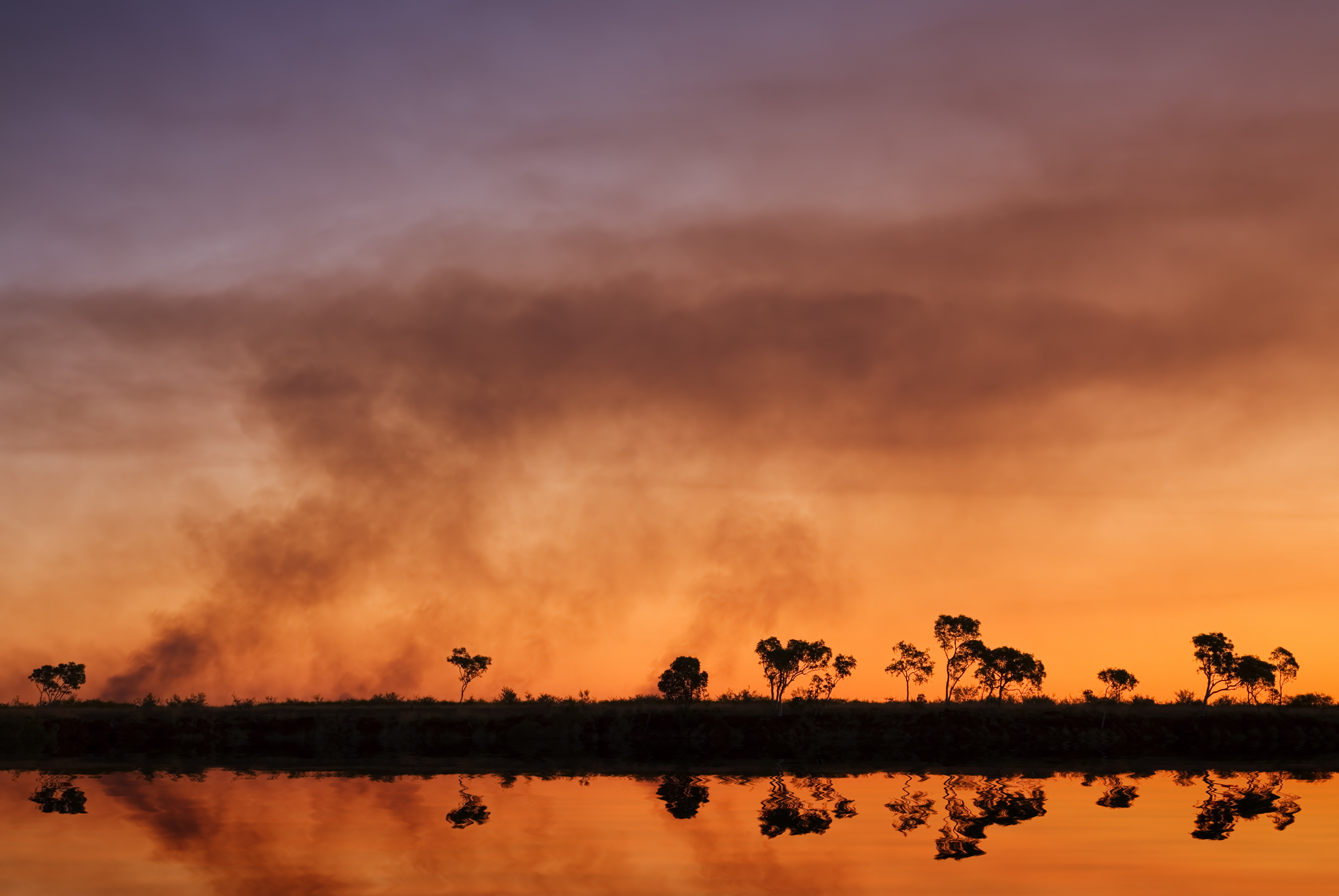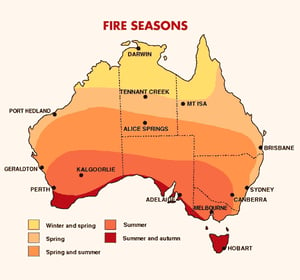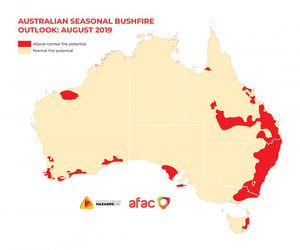The Increasing Prevalence of Bushfires: Even Metropolitan Schools Can Be Affected

According to the Bureau of Meteorology (BOM) “Climate change is influencing the frequency and severity of dangerous bushfire conditions in Australia and other regions of the world, including through influencing temperature, environmental moisture, weather patterns and fuel conditions. There have been significant changes observed in recent decades towards more dangerous bushfire weather conditions for various regions of Australia”.
The BOM also notes that observed changes in southern and eastern Australia include more extreme conditions during summer, as well as an earlier start to the bushfire season with dangerous weather conditions occurring significantly earlier in spring than they used to. “These trends towards more dangerous bushfire conditions are at least partly attributable to human-caused climate change, including through increased temperatures”.
In a recent ABC report, when asked how the bushfire risk would change in the next 10 to 100 years, and whether there would be more extreme or catastrophic fire weather days, Tasmania Fire Service Director of Community Safety, Sandra Whight replied “It is really likely to change, it is going to increase”.
 The BOM has produced a fire seasons map that identifies, at a glance, when fire seasons take place across Australia. For schools in the southern and eastern part of the country, the latter half of term four and the bulk of term one coincide with the peak time for bushfires and other fire related incidents in these regions.
The BOM has produced a fire seasons map that identifies, at a glance, when fire seasons take place across Australia. For schools in the southern and eastern part of the country, the latter half of term four and the bulk of term one coincide with the peak time for bushfires and other fire related incidents in these regions.
In addition, the Bushfires and Natural Hazards Cooperative Research Centre Australia (BNHCRC) has developed the seasonal bushfire outlook for southern Australia. This map indicates areas of bushfire potential with red being above normal and yellow being normal.

Many metropolitan and regional non-government schools will be found in the areas of the map identified as being ‘above normal’ for bushfire potential for August 2019.
Using information gleaned following the recent and ongoing bushfires in New South Wales, Queensland and Western Australia in November and December 2019, and based on the seasonal bushfire outlook map for southern Australia, there is no doubt that all schools need to be prepared for bushfires and the raft of potential life-threatening hazards that can accompany them. More than 600 schools were closed on 12th November in New South Wales based on the catastrophic fire threat on that day.
Schools set in suburban landscapes can also be affected by bushfires if they are in proximity to public open space or small pockets of undeveloped land.
In 2016, Sydney-based Fire and Rescue NSW and member of the Firefighters Climate Alliance, Jim Casey was reported as saying “What is really very clear is that the conditions for a catastrophic fire are in place and we expect these conditions to continue in a warmer climate. It becomes not a question of if but a question of when we will be seeing devastating bushfires.”
Clearly not a lot has changed in the predictions and the bushfires are not just continuing, they are increasing in “frequency and severity”.
What Should Schools do on Catastrophic or Code Red Fire Rating Days?
The BOM defines the catastrophic or Code Red fire rating as follows:
The highest category of Fire Danger Rating is Catastrophic except in Victoria where it is called Code Red. Tasmania depicts the Catastrophic FDR with the colour Black.
The Department of Fire Services (DFES) in most states and territories defines it as follows:
When the Fire Danger Rating is Extreme or Catastrophic for your area, any fires that start will be extremely hard for fire authorities to control. Even a well prepared, well-constructed and actively defended home may not survive.
In Western Australia, the DFES goes one step further and states:
If this sort of weather is expected you should leave the day or hours before a fire might threaten as this is the best option for your survival”
Each state and territory has its own requirements for government schools in the event that a catastrophic or “Code Red” (Vic) fire rating has been called. Examples from around the country include:
- Queensland: Under this directive, the Chief Executive of the Department of Education gives authority to a principal to temporarily close their school or campus in a disaster or emergency situation and to re-open their school or campus and to the Regional Director to do so where the principal has not already acted.
- South Australia: If the Country Fire Service gives advance notice of a forecast “catastrophic” fire danger day, schools and preschools in the relevant fire ban district(s) that have a bushfire risk rating of R1 or R2 will be directed to close automatically. In addition, all school transport services in the affected fire ban district(s) will be cancelled.
- Victoria: Known as a “Code Red” day rather than “catastrophic”. Schools and early childhood services that have been identified as being at high fire risk and on the Education Department’s bushfire at-risk register will close on days determined Code Red by the Emergency Management Commissioner. School Governance noted that the requirement for school closures applies to non-government schools on the bushfire at risk register too.
- Western Australia: According to the “Principal’s Guide to Bushfire”, schools on the Bushfire Zone Register identified as Extreme or Very High may be directed to invoke pre-emptive closure when advance warning of a Catastrophic Fire Danger Rating (FDR) is provided. A directive regarding a pre-emptive closure will be initiated by the Department of Education Central Office.
Schools need to check with their relevant association or overarching governing body to ascertain if they are required to be closed on Catastrophic or Code Red fire days.
Regardless, all schools, government or non-government, should plan for pre-emptive closures on days when the fire weather rating is determined to be catastrophic or Code Red. The safest option for all bushfires is to leave early, before a bushfire threatens your school and the staff and children - preferably the day before. This is the key determiner in the saving of lives. Infrastructure can be re-built or replaced. Lives cannot.
What Can Schools Do to Prepare (If They Have Not Already Done So)?
In 2017 we published a similar article in School Governance. The suggestions for schools that we published then are re-printed here with updated links.
What should schools be doing as a minimum during a heightened summer bushfire season?
- Have your school regularly (possibly annually) assessed by a qualified consultant or company regarding its bushfire risk status. The consultant may also be able to assist your school with the development of a bushfire management plan.
- Log onto your state or territory (or regional) fire service website to access the wealth of fire safety information that is available and to access the most up to date fire warnings. If possible, enrol your school to receive the email and phone warnings issued by many fire and emergency departments. (Note that this could result in many emails as the services usually do not or cannot send regional specific warnings to specific organisations.)
- Access the BOM website to obtain the most up to date weather patterns and warnings regarding severe weather conditions and fire condition warnings.
- Log onto the department of parks and wildlife in your state or territory. Some fire warnings that take place in gazetted parks and on Commonwealth land may be reported by the relevant parks authority.
- Log onto your state or territory school association website and refer to any bushfire policy guidelines that may be available for school use.
- Monitor ABC Radio in your local area- the ABC receives fire and emergency services as well as BOM fire weather warnings for most areas of the country-they broadcast these warnings as and when necessary.
- Appoint a member of staff (or two) to monitor the fire and parks services and BOM websites on a daily or more regular basis, depending on fire warnings and the BOM Fire Weather Warning for your region. If your school has students who are attending a camp site or another venue off site, a responsible supervisor for the camp/tour excursion should be allocated this role.
- Prepare the physical surrounds of your school. This means meeting your local government firebreak regulations, having ‘fuel’ sources cleared at least 20 metres from around buildings - an Asset Protection Zone (APZ), removing tree branches that ‘overhang’ buildings, being prepared for ‘ember attacks’ by ensuring that air-conditioners can be turned off and by having no leaf litter and other fuel sources in guttering or on roof spaces, ensuring that all evacuation paths are clear of clutter and ensuring that your on and off campus ‘safer zone’ or ‘safer space’ is prepared and ready in the event that it must be used to save lives.
- Have an up to date and working Emergency and Critical Incident Plan that includes bush fire or fire preparedness and lock down (to a safer location on campus) or evacuation (to a safer location off campus). This should also include out of hours Has this plan been communicated to all students, staff, relief staff, parents and your school bus company? Has your school conducted emergency evacuation drills? Is one planned for early in first term of next year?
- Have clear communication plans and strategies, including direct communication with emergency services. This includes having emergency communication equipment, class rolls and visitor logbooks, contact details of parents/guardians, first aid kits, provisions for students with special needs and so on. It is also strongly recommended that schools in regional or bushfire prone areas develop their bushfire plan with their local fire and emergencies services department and the local police.
Summary
According to the BOM “Bushfire weather conditions in future years are projected to increase in severity for many regions of Australasia, including due to more extreme heat events, with the rate and magnitude of change increasing with greenhouse gas concentrations (and emissions)”.
In the report, Living in a Land of Fire, the authors note “Fires are an inherent part of the Australian environment. They cannot be prevented, but the risks they pose to life, health, property and infrastructure, production systems, and to environment values can be minimised through systematic evaluation and strategic planning and management”.
According to the Council of Australian Governments (COAG) National Inquiry on Bushfire Mitigation and Management document “A structured risk management process, consistent with the Australian Risk Management Standard, offers the best framework for making strategic and operational decisions about bushfire mitigation and management”.
The bushfire risk management process, as part of a school’s total enterprise risk management system, provides a framework for the effective management of bushfire (and bushfire related) threats in schools and it accommodates the changing climate and weather patterns. A risk management process focuses the school’s attention on both the threats and the emergencies/critical incidents and on the context in which these are set within the school. Schools that may be directly affected by bushfires, smoke or indirectly through losses of enrolments due to fires need to heed this advice.
The School Governance Team would like to recognise the significance of the responses to the November/December 2019 bush fire crisis by hundreds of schools. Keeping everyone safe is at the heart of good school governance, risk management and compliance. What are the consequences if you have a bushfire risk and you choose to ignore it?
About the Author

Craig D’cruz
Resources you may like
Article
Cyber security and AI in schools: emerging risks and governance imperatives
In an era where artificial intelligence (AI) tools are becoming as commonplace as calculators once...
Read MoreArticle
Under 16 social media 'ban’: an explainer for schools
The Australian Government passed a new law called the Online Safety Amendment (Social Media Minimum...
Read MoreArticle
Risk management essentials for schools
Schools face an increasingly complex landscape of risks every day; from safety hazards on school...
Read More
